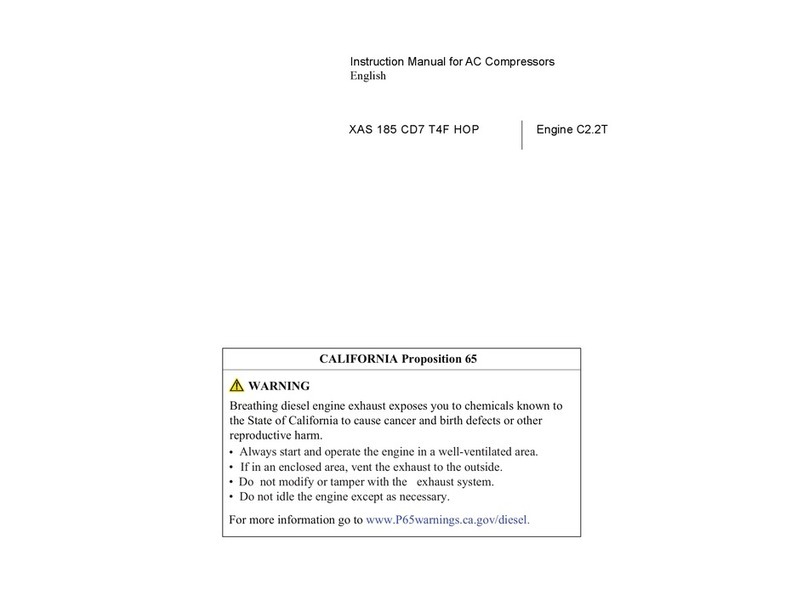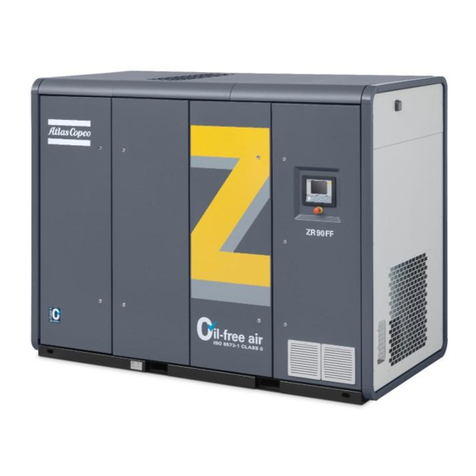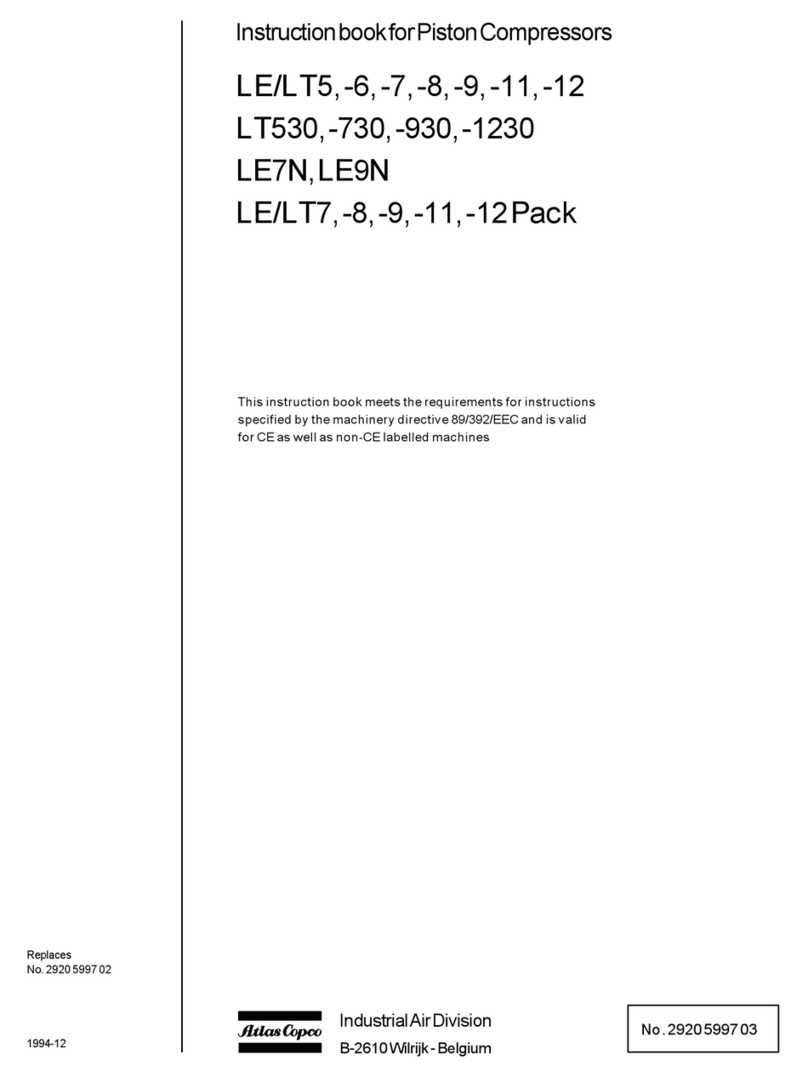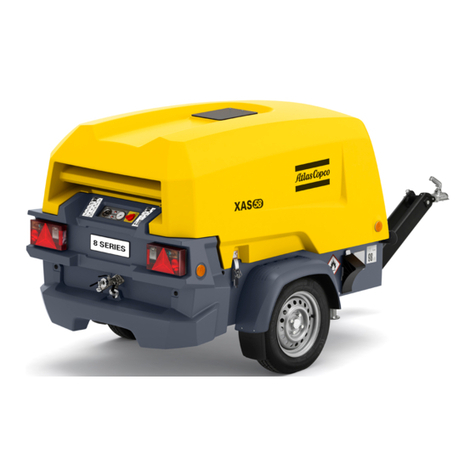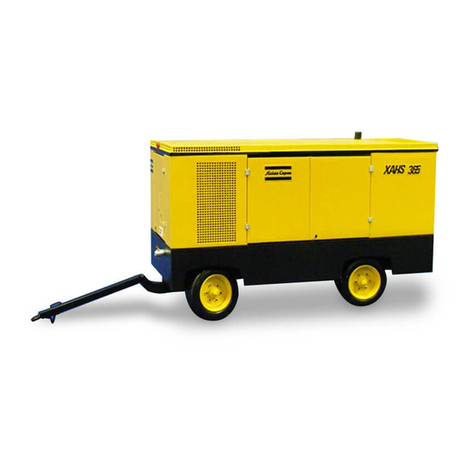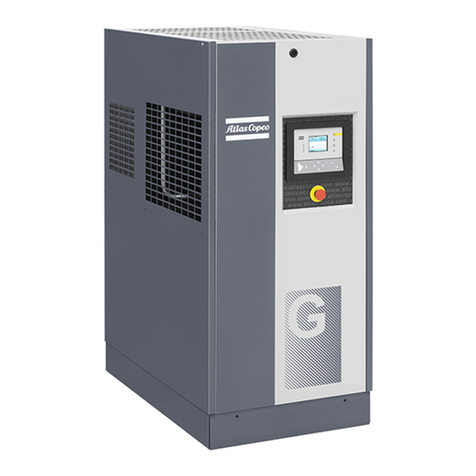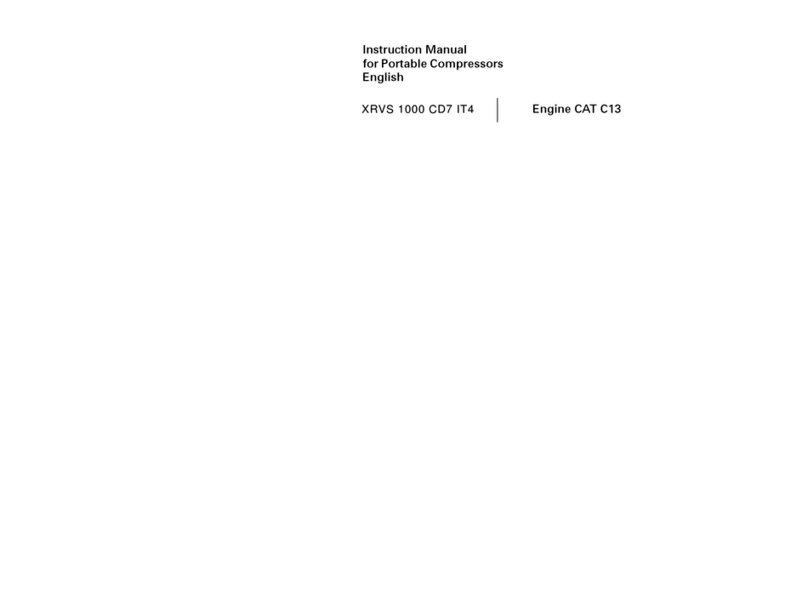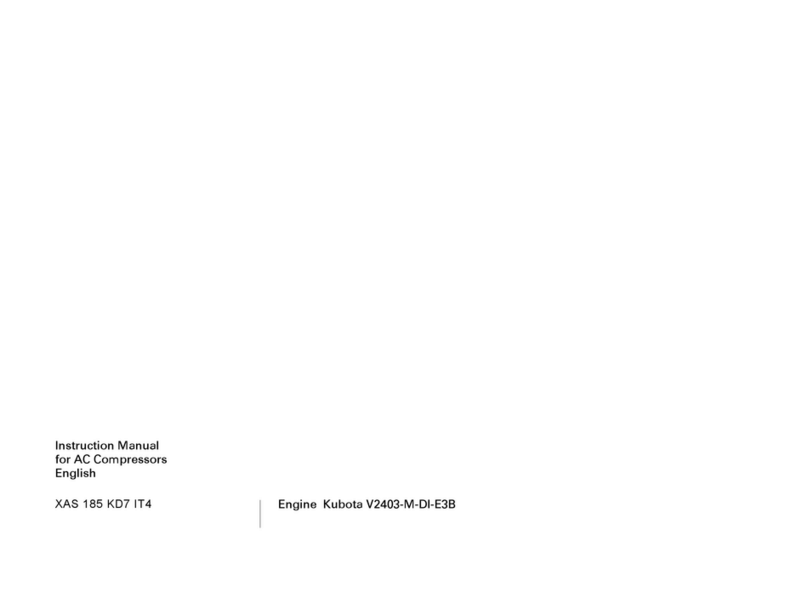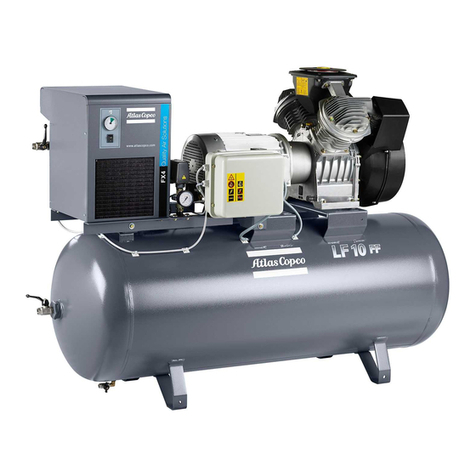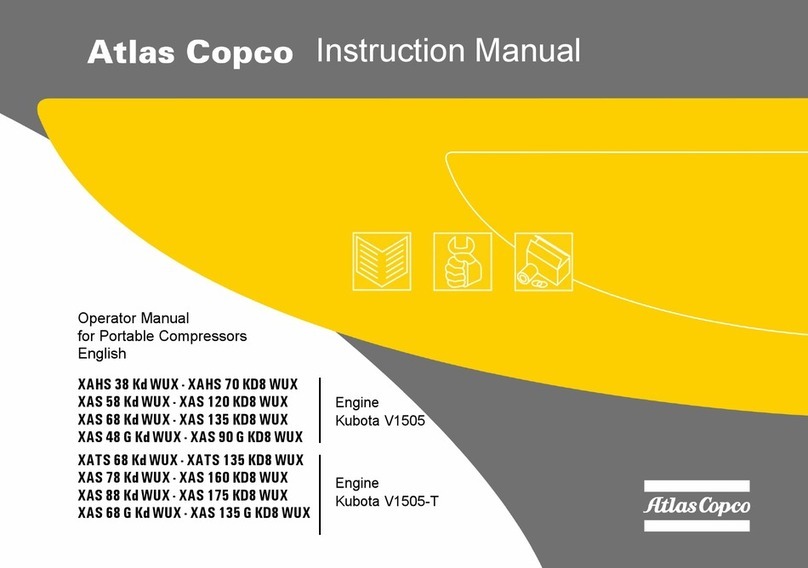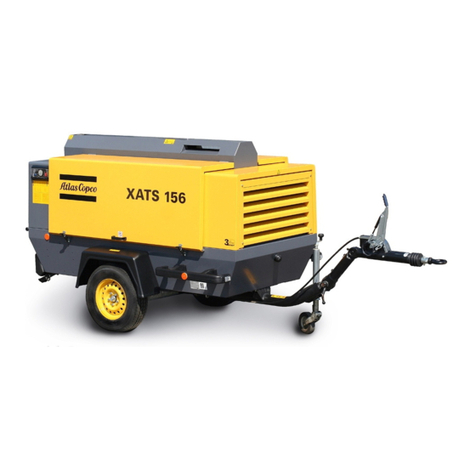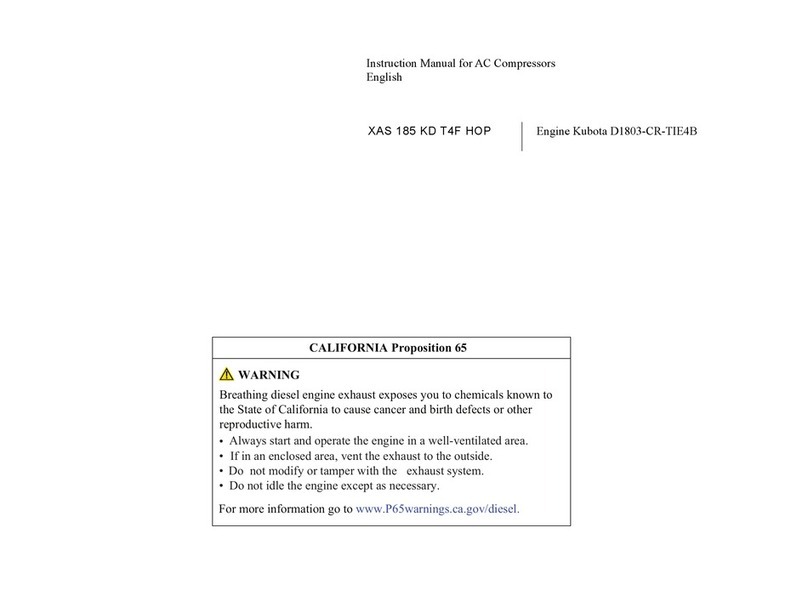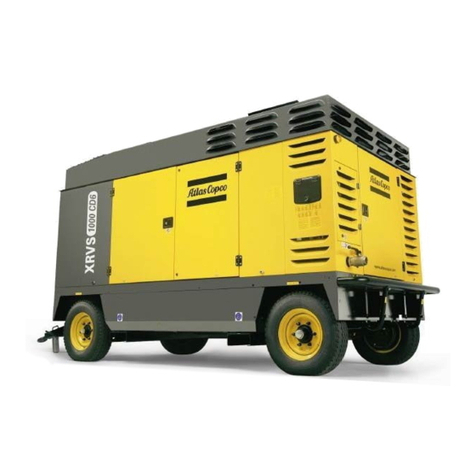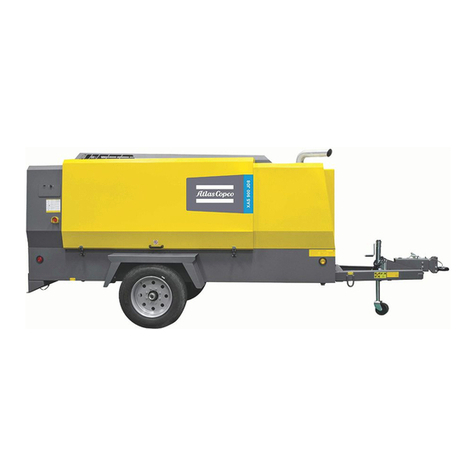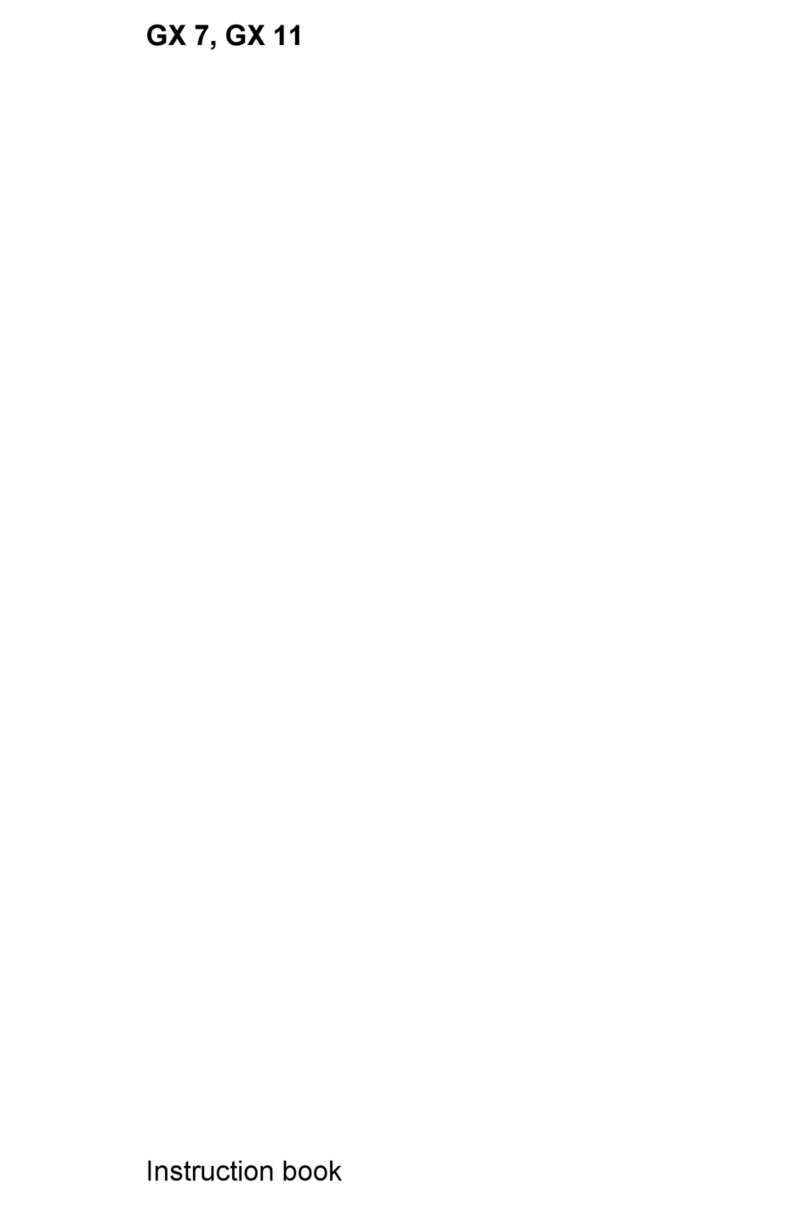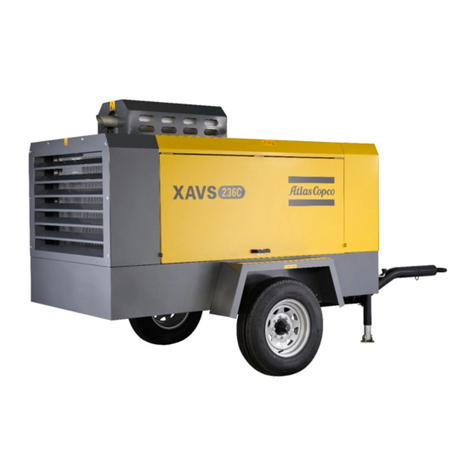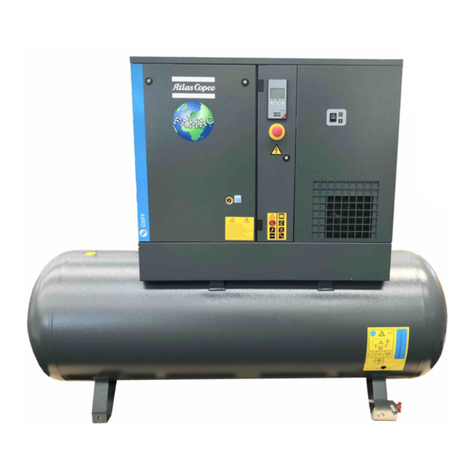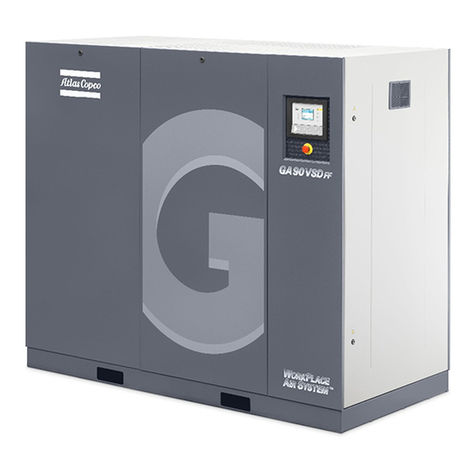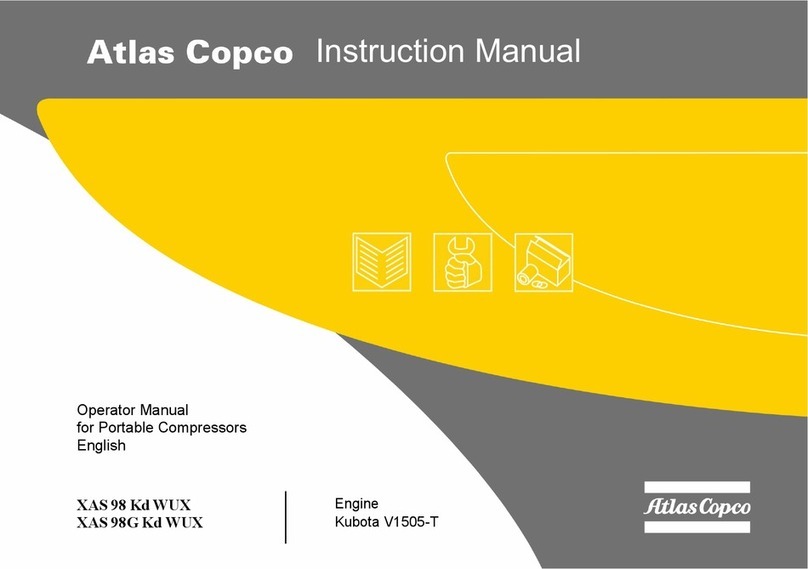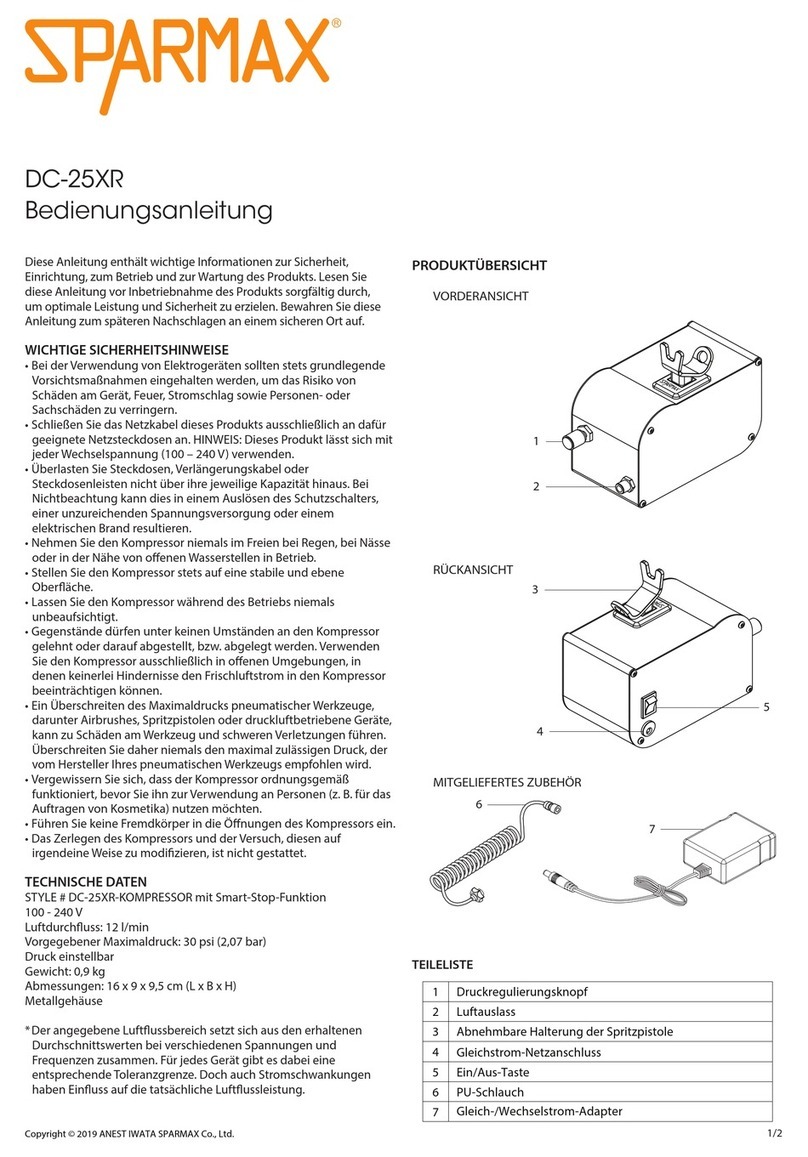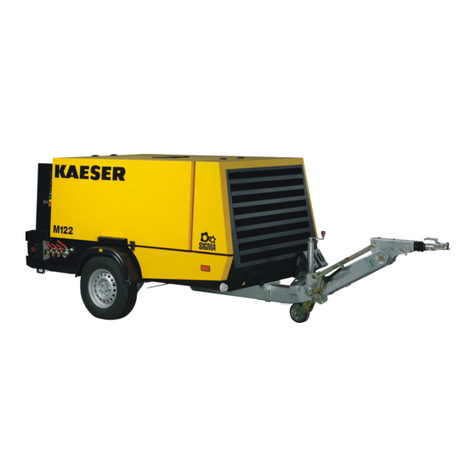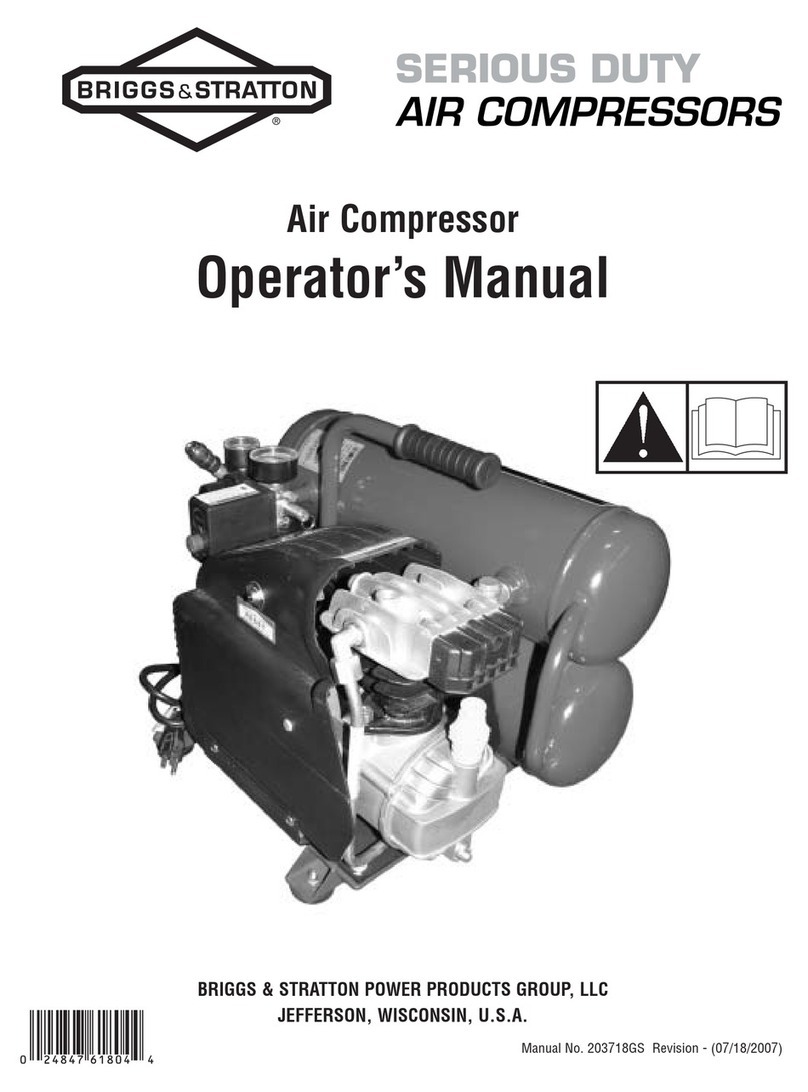
4 1310 3011 65
1.1 Introduction
The policy of Atlas Copco is to provide the users of their
equipment with safe, reliable and efficient products.
Factors taken into account are among others:
-the intended and predictable future use of the
products, and the environments in which they are
expected to operate,
-applicable rules, codes and regulations,
-the expected useful product life, assuming proper
service and maintenance.
Before handling any product, take time to read the relevant
instruction book. Besides giving detailed operating
instructions, it also gives specific information about safety,
preventive maintenance, etc.
These precautions are general and some statements will
therefore not always apply to a particular unit.
When handling, operating, overhauling and/or performing
maintenance or repair on Atlas Copco equipment, the
mechanics are expected to use safe engineering practices
and to observe all relevant local safety requirements and
ordinances. The following list is a reminder of special
safety directives and precautions mainly applicable to Atlas
Copco equipment.
This brochure applies to machinery processing or
consuming air or inert gas. Processing of any other gas
requires additional safety precaution typical to the
application and are not included herein.
All responsibility for any damage or injury resulting from
neglecting these precaution: or by non-observance of
ordinary caution and due care required in handling,
operating, maintenance or repair, also if not expressly
mentioned in this brochure or the instruction book(s), is
disclaimed by Atlas Copco.
If any statement does not comply with local legislation, the
stricter of the two shall be applied. Statements in this
manual should not be interpreted as suggestions:,
recommendations or inducements that it should be used in
violation of any applicable laws or regulations.
1.2 General Safety Precautions
1 The owner is responsible for maintaining the unit in a
safe operating condition. Unit parts and accessories
must be replaced if missing or unsuitable for safe
operation.
2 Use only lubricating oils and greases recommended or
approved by Atlas Copco or the machine
manufacturer. Ascertain that the selected lubricants
comply with all applicable safety regulations, especially
with regard to explosion or fire risk and the possibility
of decomposition or generation of hazardous gases.
3 The supervisor, or the responsible person, shall at
all times make sure that all instructions regarding
machinery and equipment operation and
maintenance are strictly followed and that the
machines with all accessories and safety devices,
including the entire compression or vacuum
system with pipes, valves, connectors, hoses, etc.,
as well as the consuming devices, are in good
repair, free of abnormal wear or abuse, and are
not tampered with.
4 Maintenance, overhaul and repair work shall only be
carried out by adequately trained personnel; if required,
under supervision of someone qualified for the job.
5 Whenever there is an indication or any suspicion that
an internal part of a machine is overheated, the
machine shall be stopped. No inspection covers shall
be opened before sufficient cooling time has elapsed;
this is to avoid the risk of spontaneous ignition of the oil
vapor when air is admitted.
6 Maintenance work, other than routine attention, shall
only be undertaken when the machine is standing still.
7 Before dismantling any pressurized component, the
compressor or the equipment shall be effectively
isolated from all sources of pressure and be completely
vented to atmosphere. In addition, a warning sign
bearing a legend such as "work in progress; do not
open" shall be attached to each of the isolating valves.
8 Before a machine is being repaired, steps shall be
taken to prevent inadvertent starting. In addition, a
warning sign bearing a legend such as "work in
progress; do not start" shall be attached to the starting
equipment. The battery shall be disconnected and
removed or the terminals covered by insulating caps.
9 Normal ratings (pressures, temperatures, speeds, etc.)
shall be durably marked.
10 Never operate a machine or equipment beyond its
rated limits (pressure, temperature, speed, etc.).
11 Maintenance and repair work should be recorded in an
operator's logbook for all machinery. Frequency and
nature of repairs can reveal unsafe conditions.
12 The machinery and pneumatic equipment shall be kept
clean, i.e. as free as possible from oil, dust or other
deposits.
13 To prevent an increase in working temperature, inspect
and clean heat transfer surfaces (cooler fins,
intercoolers, water jackets, etc.) regularly. For every
machine establish a suitable time interval for cleaning
operations.
14 All regulating and safety devices shall be maintained with
due care to ensure that they function properly. They may
not be put out of action.
15 Care shall be taken to avoid damage to safety valves and
other pressure relief devices, especially to avoid plugging
by paint, oil coke or dirt accumulation, which could interfere
with the functioning of the device.
16 Pressure and temperature gauges shall be checked
regularly with regard to their accuracy. They shall be
replaced whenever outside acceptable tolerances.
17 Parts shall only be replaced by genuine Atlas Copco
replacement parts.
18 Safety devices shall be tested as described in the
maintenance schedule of the instruction book(s) to
determine that they are in good operating condition.
19 Never use flammable solvents or carbon tetrachloride for
cleaning pans. Take safety precautions against toxic
vapors when cleaning parts in or with cleaning products.
20 Observe scrupulous cleanliness during maintenance and
repair. Keep away dirt by covering the parts and exposed
openings with clean cloth, paper or tape.
